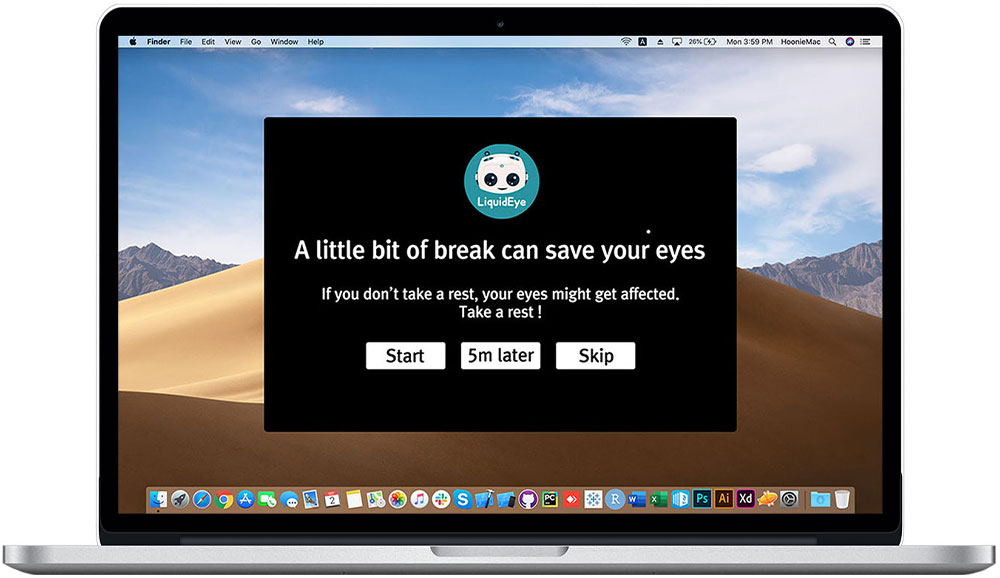Design Guidelines of Computer-based Intervention for Computer Vision Syndrome: Focus Group Study and In-the-wild Deployment
Published in Journal of Medical Internet Research 23(3), 2021.
Seoul National University

Abstract
Background: Prolonged time of computer use increases the prevalence of ocular problems, including eye strain, tired eyes, irritation, redness, blurred vision, and double vision, which are collectively referred to as computer vision syndrome (CVS). Approximately 70% of computer users have vision-related problems. For these reasons, properly designed interventions for users with CVS are required. To design an effective screen intervention for preventing or improving CVS, we must understand the effective interfaces of computer-based interventions. Objective: In this study, we aimed to explore the interface elements of computer-based interventions for CVS to set design guidelines based on the pros and cons of each interface element. Methods: We conducted an iterative user study to achieve our research objective. First, we conducted a workshop to evaluate the overall interface elements that were included in previous systems for CVS (n=7). Through the workshop, participants evaluated existing interface elements. Based on the evaluation results, we eliminated the elements that negatively affect intervention outcomes. Second, we designed our prototype system LiquidEye that includes multiple interface options (n=11). Interface options included interface elements that were positively evaluated in the workshop study. Lastly, we deployed LiquidEye in the real world to see how the included elements affected the intervention outcomes. Participants used LiquidEye for 14 days, and during this period, we collected participants’ daily logs (n=680). Additionally, we conducted prestudy and poststudy surveys, and poststudy interviews to explore how each interface element affects participation in the system. Results: User data logs collected from the 14 days of deployment were analyzed with multiple regression analysis to explore the interface elements affecting user participation in the intervention (LiquidEye). Statistically significant elements were the instruction page of the eye resting strategy (P=.01), goal setting of the resting period (P=.009), compliment feedback after completing resting (P<.001), a mid-size popup window (P=.02), and CVS symptom-like effects (P=.004). Conclusions: Based on the study results, we suggested design implications to consider when designing computer-based interventions for CVS. The sophisticated design of the customization interface can make it possible for users to use the system more interactively, which can result in higher engagement in managing eye conditions. There are important technical challenges that still need to be addressed, but given the fact that this study was able to clarify the various factors related to computer-based interventions, the findings are expected to contribute greatly to the research of various computer-based intervention designs in the future.
Materials